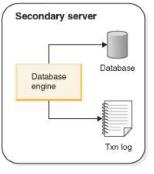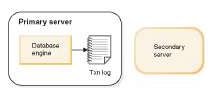|
Symbol
|
Description
|
|---|---|
 |
The rectangle represents the executing program, that is, the database server (engine) itself.
|
 |
The cylinder represents the data, generally stored on disk. Alternatively, some or all may be stored in memory.
|
 |
This symbol represents the transaction log (Txn Log), which is used in both database recovery and HotStandby.
|
 |
A rounded rectangle represents a complete server with data and Txn Log. If the phrase Secondary server or Primary server is inside the rounded rectangle, then the server is a HotStandby server.
|
 |
For simplicity, in some cases the cylinder that represents the data in the database is omitted. In some cases, the symbol is simplified even further to show just the rounded rectangle. Both icons are simplified representations of a server.
|